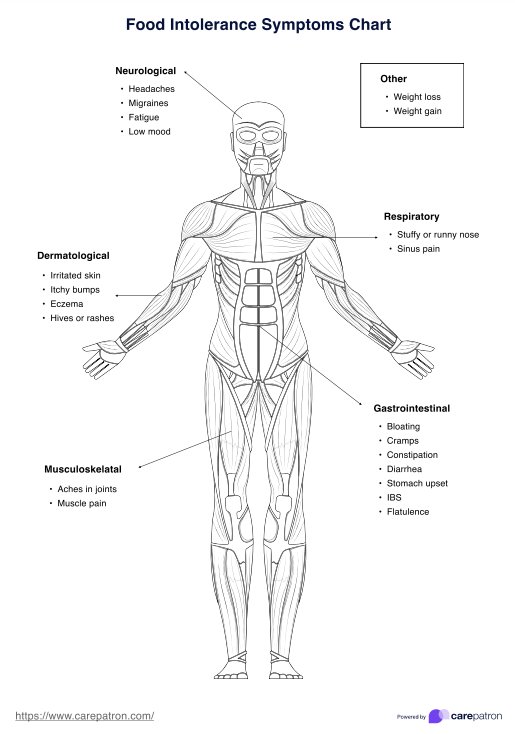The Food Intolerance Symptoms Chart Template is a tool used in healthcare settings to help identify and document symptoms that may be linked to food intolerance. It includes a detailed illustration of the human body and a list of potential symptoms, aiding in pinpointing and correlating specific physical reactions to certain dietary habits.

Food Intolerance Symptoms Chart
Access our Food Intolerance Symptoms Chart template, a helpful diagnostic tool for easily managing dietary sensitivities.
Food Intolerance Symptoms Chart Template
Commonly asked questions
This template benefits healthcare professionals like dietitians, nutritionists, general practitioners, and gastroenterologists. It's also a valuable educational resource for students and educators in nutrition and dietetics, as well as for patients looking to understand their symptoms better, especially patients that have conditions that can lead to a life-threatening severe allergic reaction, such as celiac disease.
The template helps by providing a visual and systematic way to track and link symptoms to food intake. This assists in identifying patterns that might indicate intolerance, thereby aiding in diagnosis. However, it should be used alongside other diagnostic methods for comprehensive assessment.
EHR and practice management software
Get started for free
*No credit card required
Free
$0/usd
Unlimited clients
Telehealth
1GB of storage
Client portal text
Automated billing and online payments











